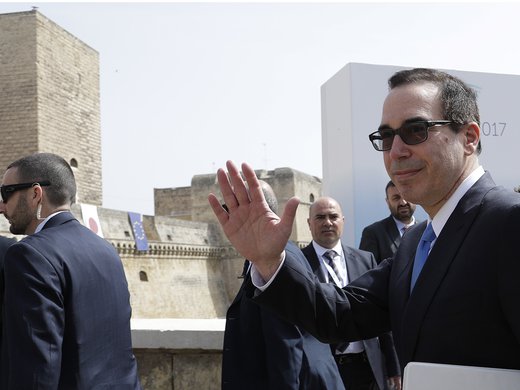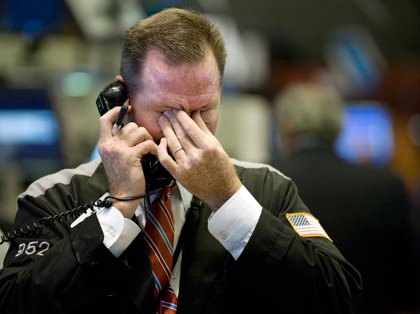This article is the first in a two-part series about US moves to undo safeguards erected after the banking crisis
In the wake of the global financial crisis, regulators around the world strengthened capital and liquidity requirements and adopted a more macro-prudential perspective.
The financial shock had revealed that pre-crisis capital and liquidity requirements on banks and other financial institutions were woefully inadequate. Moreover, before the crisis, regulators had thought that if each financial institution were adequately capitalized, the system itself would be stable. Events in the autumn of 2008 showed that was not the case.
At the same time, the spread of financial contagion from country to country revealed the extent to which financial systems and the institutions that populate them are intertwined. It became clear that better coordination of regulation and regulatory actions was necessary to safeguard financial stability and preserve the benefits of financial integration.
Financial regulators around the globe responded to these challenges. The global financial system is today better capitalized and protected against the kinds of shocks that very nearly led to the collapse of the financial system in 2008-2009.
Prospective changes to the US regulatory environment could reverse this progress, however.
House Republicans have passed the Financial CHOICE Act, which, if confirmed by the Senate, would roll back key elements of the financial regulation reforms that Congress approved in the wake of the financial crisis, in the The Dodd–Frank Wall Street Reform and Consumer Protection Act. The cornerstone of the draft law is a so-called “off ramp” from Dodd-Frank’s complex regime of capital and liquidity requirements for banks. Supporters say that offering banks a choice between higher capital requirements and the existing regulations will provide regulatory relief and safeguard financial stability. While the first of those objectives is likely, the second may prove more elusive.
Here’s why.
The fundamental objective of Dodd-Frank is to contain the systemic threats to financial stability posed by systemically important financial institutions (SIFIs) — banks and other financial institutions too big, or too complex and too interconnected, to fail. Their collapse would, it is feared, create shock waves that would reverberate throughout the financial system, endangering other institutions and leading the entire financial system to seize up. The ultimate effect of such contagion is higher unemployment, lower output and widespread corporate failures, as businesses lose access to the working capital they need to purchase inputs and sustain production.
This isn’t just academic hypothesizing. We saw this effect in the alarming events of the autumn of 2008.
At the time, there was a very real threat of another Great Depression. This risk was averted by not only swift action by central banks around the globe to inject liquidity to prevent a truly destructive collapse of financial markets but also international fiscal stimulus orchestrated by the Group of Twenty. There is a remarkable consensus that such efforts were both warranted and helpful in preventing a much deeper economic recession than was actually recorded. A survey of US economists conducted by the University of Chicago’s Booth School of Business in 2010 found that there was near unanimity on these points.
In the wake of crisis, regulators used the discretionary authorities they have to increase capital and liquidity requirements on banks.
Now, Dodd-Frank directly targets the problem of SIFIs. Such institutions are today subject to progressively higher capital requirements based on size and must conduct stress tests that allow regulators to determine if they are adequately protected against the kind of contagious collapse in asset prices that might result if one or more of their kind encounters financial difficulties. In addition, the law authorizes federal regulators comprising the Financial Stability Oversight Council to designate non-bank institutions such as large insurance groups or big consumer finance companies as systemically important to contain risks posed by institutions that are either too big or too complex and too interconnected to fail.
The effect of these efforts should be to reduce the risk of another financial crisis like the one that threatened the pillars of the financial system nearly a decade ago. On this, there is broad agreement.
At the same time, even ardent supporters of Dodd-Frank admit that there are costs associated with higher capital and liquidity requirements as banks pare down lending, and that higher compliance costs reduce returns on bank equity. Supporters of the Financial CHOICE Act argue that Dodd-Frank is bad because it reduces the efficiency of banking. But that really isn’t the issue. All regulation entails trade-offs between stability and efficiency. The real question is whether the benefits of Dodd-Frank exceed its costs.
This question is why it is important to consider “optimal fire departments.”
That is the title of a paper that Columbia University professor Joseph Stiglitz and former Director of the Congressional Budget Office Peter Orszag wrote 15 years ago. The two authors argued that the optimal size of fire departments depends on the choices made by homeowners in the construction of their homes, while homeowner choices depend on the size (a proxy, say, for response time) of fire departments. The potential for a fire in one home to quickly spread to all the rest creates an externality (the risk of contagion). If homeowners all build houses consistent with the strictest possible fire standards, however, the risk that a single house fire results in a general conflagration is reduced. Fire departments can be smaller, since the costs of preventing contagion are internalized by the decisions made by thousands of individual homeowners.
But what if these homeowners ignore the potential externality and build their homes taking the size of the fire department as given? In this case, individual homeowners only consider the extra cost of flame-resistant materials and will balance the slightly increased specific risk of fire with the level of fire protection provided by the fire department. The problem is that other homeowners all making the same calculation create a higher risk of fire faced by all, one that is too high relative to the level of protection.
The problem isn’t limited to this effect, however. In choosing an optimal fire department, consideration must be given to the fact that individuals will alter their risk-taking based on the level of protection provided. Consider a highly improbable example: a fire station on every corner. While prohibitively expensive, this outcome would assure homeowners that their property is amply protected.
The downside of this situation is that homeowners have less incentive to mitigate their risks — while they may not consciously become risk seekers, they take fewer precautions. This is the problem of moral hazard. Sensible policy making will take this effect into consideration and enforce building code requirements that limit the effects of moral hazard and “internalize” the contagion externality. Homeowners will face higher building costs but benefit from a lower risk of fire.
Now, it doesn’t take much imagination to see that the Stiglitz-Orszag discussion of optimal fire departments can be applied to the problem of financial regulation. The fire contagion externality is equivalent to the problem of systemically important institutions whose failure can spread financial distress and a bonfire of asset values. Dodd-Frank regulations that require SIFIs to hold more capital and subject them to stress tests to assess their robustness to economic and financial shocks are the counterpart of fire codes designed to prevent small fires becoming conflagrations. Before the crisis, financial regulatory frameworks didn’t have this “macroprudential” perspective. The consequences of this lacunae very nearly brought down the financial system around the globe, throwing the global economy into stagnation.
The Financial CHOICE Act would eliminate Dodd-Frank firewalls. Moreover, the proposed law’s higher capital requirements are unlikely to prevent the problems associated with institutions that are too big, or too complex and too interconnected, to fail. As research by the Federal Reserve Bank of Minneapolis points out, the capital requirements in the Financial CHOICE Act would have to be much higher than proposed. In part, this is because the simple capital leverage ratio proposed doesn’t incorporate the kind of strategic behaviour that could be expected from banks substituting riskier loans offering higher returns for less risky assets. Once again, the optimal fire department example helps in our understanding: all banks making the same asset substitutions would result in a financial system that is significantly more risky, even if individual banks are only slightly more vulnerable to shocks. It would be as if the lessons of 2008-2009 were never learned, or, if once heeded, subsequently ignored.
The really surprising thing in all this is that the two goals of the Financial CHOICE Act — reducing regulatory burdens and promoting financial stability — are not in conflict. The regulatory burdens imposed on the thousands of small community banks that were not the source of the financial crisis can be eased. There is already widespread agreement on that point. But reducing that burden does not require the elimination of macroprudential regulations on the handful of very large banks that pose systemic threats to the financial system.
Why, then, does the Financial CHOICE Act propose that very thing? Every American who lost a home or job as a result of the financial crisis should demand to know the answer.



